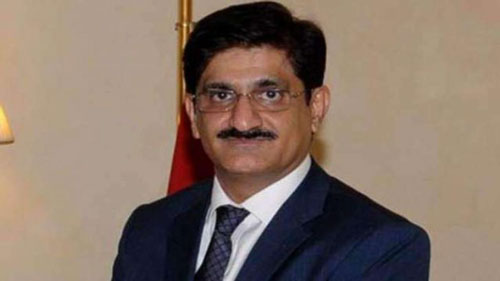Sindh Chief Minister Syed Murad Ali Shah and UN Resident Coordinator Julien Harneis in their meeting at CM House on Friday agreed to launch the Living Indus initiative which aspires for an Indus Basin that could sustain a thriving civilization from its sources to the ocean.
The meeting was attended by Sindh Minister for Irrigation Jam Khan Shoro, Principal Secretary Fayaz Jatoi, UN Representatives Aftab Bhatti and Imran Leghari, said a statement The Living Indus initiative aspires for an Indus Basin that can sustain a thriving civilization from its sources to the ocean. A basin whose natural resources and ecosystems have been repaired and restored and are resilient in the face of climate change.
The chief minister said that realizing the vision of the Living Indus initiative will require using all the tools in the toolbox, bringing to bear a wider, deeper mobilization than has been tried in the past, and deploying a level of creativity that would draw from the deep pool of energy and imagination available in Pakistan.
He added that there was no “silver bullet” solution to the Indus’ problems. “Instead, success will come from the multiplication and combination of hundreds of individual approaches and initiatives which, together, will turn the present trends around,” the CM said and added “the vision of the initiative sets the destination. A thousand pathways lead to it, we must tread them all”. Julin Harneis said that the initiative was not a challenge to existing policies and programs, nor a proposal to change these.
He added that instead, it sought to establish the health of the Indus Basin at a higher level of urgency and ambition, both through the implementation of a series of new and innovative interventions in the short term, and through the identification and deployment of as-yet-untried approaches drawn from and adapting approaches tried in other parts of the world.
The chief minister and visiting UN representatives agreed on a working list of 26 interventions / programs proposed as the beginning of the conversation to serious efforts to restore the health of the Indus Basin.
They include sustainable development of new and existing Protected Areas, including zero carbon Protected Areas, building back biodiversity to restore terrestrial, aquatic and bird life in the Indus Basin, integrating coastal zone management in the Indus Delta to improve climate resilience, scaling up and expanding geographical outreach for Glacial Lake Outburst Floods initiatives, supporting and scale-up implementation of ecosystem-based adaptation approaches and green infrastructure for flood control and groundwater recharge.
There would be nature-based solutions for conservation of Indus watershed through integrated watershed management and improve management of saline water Right Bank Outfall Drain (RBOD) and Left Bank Outfall Drain (LBOD).It was also agreed to establish urban forests in cities along the Indus River Basin.
Protect, rehabilitate, and expand mangroves ecosystem and enhance resilience of communities in the Indus Delta. Facilitate and support social entrepreneurship programs for Climate Resilient Indus.
Enhance access to clean energy through small-scale interventions for communities, achieve climate resilience with more crop per drop, with a shift towards Permaculture by setting up model farms, make more water available through nature-based infrastructure for sustainable agriculture in water-stressed areas, improve governance for sustainable conservation of inland and marine fisheries, promote community based ecotourism by Improving governance for notified wildlife and national parks, establish new and uplift existing culture heritage sites.
It was also agreed to establish 100,000 (Water Conservation) ponds across the Indus Basin owned by communities, sustainable groundwater governance through improved implementation of Provincial Water Acts, 10 zero Plastic Waste cities in the Indus Basin, improve implementation of effluent treatment for industries and municipalities to prevent point source pollution of the Indus Waters.







